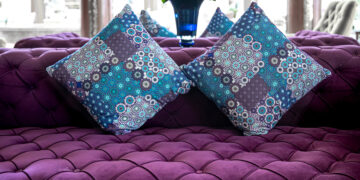A calmer morning, a softer evening, and fewer tiny hassles add up to a better day. This guide gathers simple, proven upgrades you can set up in an hour or a weekend. It keeps comfort first, cost second, and complexity third. You’ll find ideas that work in apartments and houses, backed by common-sense best practices from energy and safety experts. If you’ve been looking for a gentle starting point, consider this your map to decoradtech smart home ideas by decoratoradvice that feel natural, warm, and quietly helpful.
Why this works
Small, thoughtful automations do two powerful things. First, they remove friction in the moments you repeat every day—waking up, leaving, coming home, winding down. Second, they make your spaces feel more intentional: lighting that matches the time of day, air that feels fresh without a roar, locks and sensors that keep worries low. The throughline in these decoradtech smart home ideas by decoratoradvice is comfort you can feel this week, not tech for tech’s sake.
Reliable frameworks matter here. Standards like Matter and Thread are designed to make devices work together more consistently, while Zigbee, Z-Wave, and Wi‑Fi devices remain widely supported and mature. Choosing well at the start helps your plug-in lamps, dimmers, sensors, thermostats, and locks behave like one team.
Start smart
Pick a “home base” that suits your household. If you want devices from different brands to cooperate, look for Matter support and, where possible, Thread radios for low-power, fast mesh control. If you’re already deep into a particular ecosystem, there’s no shame in staying put—stability is comfort.
Build in privacy and reliability from day one. Favor products with local control (so basic commands work even if the internet blinks), enable two‑factor authentication on your accounts, and keep firmware updated on your schedule. A separate guest or IoT network on your router is a simple way to isolate devices while keeping your main network clean. These are steady, well‑accepted practices among security professionals, and they pay off in everyday peace of mind.
Finally, anchor your setup with one routine you’ll actually use—morning, arrival, bedtime, or away. When one routine works well, the rest fall into place.
Quick wins
A few low-lift changes can transform daily flow without touching a single wire.
- Smart plugs for lamps. Plug‑in control for table and floor lamps lets you set gentle schedules or one‑tap scenes. Keep names plain—“Sofa Lamp” beats “Device‑01.”
- A single motion path. One motion sensor plus a warm, dimmable LED bulb creates a low‑glare path from bedroom to bath after dark. Keep brightness around 10–20% to preserve night vision and sleep cues.
- Door and mail alerts. A slim door/window sensor on a mailbox, porch gate, or side door sends a nudge when deliveries arrive—no constant camera checking required.
- Wind‑down scene. A simple scene that dims living‑room lights to 30%, warms color temperature, and quiets notifications gives your brain a cue to slow down.
- Thermostat nudge. A 1–2° evening adjustment often feels better than you expect. The U.S. Department of Energy notes that thoughtful setbacks—like 7–10°F for 8 hours—can deliver around 10% annual heating/cooling savings, and small steps are an easy start.
- Leak sensors. Tuck battery leak sensors under sinks and near the water heater. Early alerts reduce mess and stress far more often than you’d think.
These quick wins embody decoradtech smart home ideas by decoratoradvice: small steps, real comfort.
Rooms
Entryway. A smart lock with auto‑unlock and a reliable keypad code ends the pocket‑pat dance. Add a rule that turns the hall light on at sunset or briefly on motion after dark. If you use a doorbell camera, enable privacy masking and notifications only when nobody’s home to reduce noise and protect neighbors’ privacy.
Living room. Layered light is the secret to cozy. Pair a floor lamp, a table lamp, and a bias light behind the TV. Create a “Movie Night” scene that sets lamps to 20–30% warm, lowers shades, and runs a quiet fan on low. If seasonal allergies bug you, a HEPA air purifier at a low, steady setting helps—indoor air can spike during cooking or pollen surges, and agencies like the EPA recommend filtration to reduce fine particles.
Kitchen. Under‑cabinet light strips at 20% after 10 p.m. are friendly to sleepy eyes. A plug‑in outlet for the kettle or coffee maker on a weekday timer saves minutes when you’re rushing. Leak sensors by the dishwasher are cheap protection with outsized value.
Bedroom. A sunrise alarm that brightens over 20–30 minutes is kinder than a buzzer, and warmer evening light supports melatonin release, which sleep researchers consistently associate with better wind‑down. Automate blackout shades to behave differently on weekdays and weekends, and put a small “All Off” button by the bed to kill lights and check the door lock without getting up.
Bathroom. Control the exhaust fan by humidity to clear fog without guesswork. A mirror light at 10% can double as a nightlight that doesn’t wake you fully. Maintaining 30–50% indoor humidity is a commonly recommended band to limit mold and keep comfort steady.
Home office. Presence‑based lighting that follows you and a smart power strip that cuts standby draw on peripherals reduces both distraction and waste. A small “Do Not Disturb” indicator light outside the door can gently remind family you’re in a call.
Kids’ room or nursery. Keep it gentle. A soft nightlight, a simple sound machine routine, and a door‑ajar alert help without over‑engineering. Avoid bright motion lights that can startle awake.
Outdoor. Path lights at sunset improve safety, with a brief bump to brighter levels on motion. Set garage door left‑open alerts after 10 minutes. If you have sprinklers, a basic skip on rain rule saves water and keeps plants happier.
Renters
You can do a lot without a single permanent change. Use adhesive mounts for sensors, no‑neutral smart switches for older apartments, and plenty of plug‑in lamps instead of hardwired fixtures. Choose battery shades or tension‑rod curtains when drilling is off‑limits. When it’s time to move, label each device, keep the screws and manuals in a zip bag, and factory‑reset before packing so setup in the next place goes smoothly. Renter‑friendly is the heart of decoradtech smart home ideas by decoratoradvice—portable, tasteful, and easy to live with.

Budgets
Start where you’re comfortable and grow slowly.
- Under $50 per room. One smart plug and one warm, dimmable LED bulb. That’s enough for a real routine.
- $50–$150. Add a motion sensor or a plug‑in shade timer. Consider one leak sensor in kitchens and baths.
- $150–$500. Add a smart lock or smart thermostat and a starter hub if your devices prefer one. Look for Matter‑ready gear, replaceable batteries, and options for local control.
Spend more on things your hands touch every day—locks, switches, shades—and less on things you rarely notice.
Routines
Good routines are specific, quiet, and short.
- Good Morning. Thirty minutes before wake time, raise shades to 30%, set lights to a warm 20%, start the kettle, and play a brief news or weather summary.
- Leaving. With one tap or presence sensing, turn off lights, switch the thermostat to eco, lock the door, and start the robot vacuum if no one’s home.
- Coming Home. At sunset or when your phone arrives, bring entry lights to 40%, start a soft playlist, and give the purifier a 30‑minute boost.
- Wind Down. At a set hour, shift lamps to warm 2700K or below, dim screens via bias lighting, and enable Do Not Disturb on shared speakers.
- Vacation. Randomize a few lamp schedules, keep outdoor motion lights active, and enable a mail/delivery alert on the entry sensor.
These templates are classic decoradtech smart home ideas by decoratoradvice: simple, repeatable, and friendly to everyone in the household.
Style
Hide or shorten wires where you can, and match finishes on visible devices to your room’s metals and woods. Use warm color temperatures (2700–3000K) in living spaces at night, keep neutral‑white (3500–4000K) for task areas like kitchens and offices, and place sensors where they see people movement, not pets. If you use cameras, point them away from mirrors and windows to avoid glare and reflections.
Energy
Comfort and savings can coexist if you tune for them.
- Thermostat. Slight nightly setbacks and daytime eco modes deliver savings without cold shocks. The Department of Energy’s guidance on 7–10°F for 8 hours is a useful benchmark; even modest adjustments help.
- Lighting. Dimming lowers energy use immediately. Warm, dim evening light is also easier on your eyes and sleep cycle, an observation echoed by sleep medicine researchers who advise reducing blue‑heavy light before bed.
- Standby power. A smart strip or an energy‑monitoring plug on your TV and office gear exposes idle draw and cuts it automatically when you leave.
Track what feels good. If a schedule annoys you, soften it. Comfort is the goal.
Safety
Take five simple precautions and most problems never start.
- Use UL/ETL‑listed products from reputable brands.
- Don’t exceed the rated wattage on smart plugs and in‑line dimmers.
- Enable 2FA on every account tied to your home.
- Put devices on a guest/IoT network and keep your router updated.
- Prefer local video storage or privacy‑respecting modes; disable features you don’t need.
These aren’t edge cases—they’re everyday best practices endorsed by consumer safety organizations and security pros.
Avoid
A few pitfalls turn convenience into clutter.
- Too many brands. Pick one or two ecosystems and stick with them.
- No conditions. A motion rule that works at 2 p.m. may be horrible at 2 a.m. Add time or light‑level conditions to keep nights quiet.
- Battery neglect. Set a quarterly reminder to swap or charge. Keep a small box of spares.
- Messy names. Clear names and room groups save you every single day.
Stories
Real homes benefit most from simple, repeatable wins.
- Studio renter. Two lamps on smart plugs, one motion‑lit path to the bathroom, and a kettle timer changed mornings instantly. Setup took an hour; comfort gains were obvious that night.
- Busy family. A front‑door keypad with one shared code, an “All Off” button by the back door, and leak sensors by the washer cut stress more than any single gadget. Kids adapted within days because the buttons made sense.
- Remote worker. Presence‑based desk lighting, a status light outside the office, and thermostat tweaks tied to occupancy improved focus and cut energy use. No one misses toggling a power strip under the desk.
These are small, human moves—classic decoradtech smart home ideas by decoratoradvice that make homes feel calmer.
Checklists
Pre‑purchase. Walk your home with your phone. Note weak Wi‑Fi spots, count outlets, and check if switch boxes have neutral wires. List your top three daily annoyances; buy only for those.
Install day. Name devices clearly, group by room, and test scenes in daylight and after dark. Show the household one button and one phrase to start; add more later.
90‑day tune‑up. Adjust dim levels and timers to match real life, replace weak batteries, and skim activity logs for rules that fire too often.
Care
Set a quarterly calendar reminder to update firmware, replace batteries, and wipe dust from sensors and camera lenses. Keep a simple inventory with model numbers and quick notes on where each device lives. If you ever switch ecosystems, a tidy inventory makes migration calm instead of chaotic.
Glossary
Matter (multi‑brand standard), Thread (low‑power mesh), Scene (saved device states), Routine (automated scene), Presence (someone is home), Motion (sensor saw movement), Local control (works without cloud), Bias light (soft backlight behind screens), Setback (temp change on schedule).
Do I need a hub?
Not always. Many smart plugs, bulbs, and sensors work over Wi‑Fi or Matter without a hub. If you want fast, low‑power sensors and rock‑solid automations, add a hub or a device that includes a Thread border router. Many modern smart speakers, TVs, and routers offer this—check your exact model’s specs.
Which ecosystem should I choose?
Use the one your household already uses comfortably (Apple, Google, Amazon, or a local hub). If you’re mixing brands, prioritize Matter support and, where possible, Thread radios for responsive, battery‑friendly sensors.
What is a Thread border router?
It’s the bridge that lets Thread devices join your home network and talk to your apps. Without it, Thread devices can’t participate. Some speakers/routers double as border routers; verify before buying.
Compatibility and Standards
Will my older Zigbee or Z‑Wave devices work with Matter?
Not directly. They can still be great—just keep using their hub or a compatible bridge. Some bridges can expose devices to Matter, but that depends on the brand.
Do Wi‑Fi devices need Thread?
No. Wi‑Fi and Thread are parallel paths. Thread shines for small, battery devices (sensors, buttons); Wi‑Fi is common for plugs, cameras, and speakers.
Can I control everything from one app?
Often, yes—especially with Matter. Still, brand apps may be needed for advanced features (firmware updates, deep settings). Day‑to‑day control can live in one place.
Privacy and Security
What is “local control,” and why does it matter?
Local control means your lights and scenes still work if the internet blips. It reduces cloud dependence and latency. Choose products that advertise local or Matter‑over‑Thread/Wi‑Fi control.
How do I enable two‑factor authentication (2FA)?
Turn it on in each vendor account’s security settings. Prefer app‑based codes (authenticator) over SMS. Store backup codes safely.
How do I keep cameras private?
Use privacy zones/masking, disable audio if not needed, and limit notifications to “away” or “no one home.” Point cameras away from mirrors/windows to avoid reflections.
Should I isolate devices on a guest/IoT network?
Yes. Create a separate SSID for smart devices and keep your main network for phones/laptops. Keep the router’s firmware updated.
Budget and Value
What’s a good minimum starter kit per room?
- 1 smart plug + 1 warm, dimmable LED bulb
- One simple scene (Evening at 20–30% warm)
- Optional: 1 motion or contact sensor with “after sunset” condition
Where should I spend more?
Invest in things you touch daily (locks, switches, shades). Spend less on rarely noticed items. Prefer Matter‑ready gear, replaceable batteries, and clear local‑control support.
Renters (No Drilling Required)
How can I set this up without permanent changes?
Use adhesive mounts for sensors, plug‑in lamps instead of hardwiring, no‑neutral smart switches (where safe and compatible), battery shades, and tension rods for curtains.
What are “no‑neutral” switches?
They work in older homes without a neutral wire at the switch box. Check bulb compatibility (often requires dimmable LEDs) and stay within rated loads.
How do I prep for moving?
Label each device by room, save screws/mounts in a zip bag, factory‑reset before packing, and keep a simple inventory so re‑setup is smooth.
Routines and Automations
Which first routine should I build?
Pick the one you’ll actually use: Morning, Arrival, Bedtime, or Away. Nail one, then add more.
How do I avoid annoying motion at night?
Add conditions: only after sunset, only when brightness is below a level, and with short, warm dim (10–20%) for night paths.
Can I do presence sensing without cameras?
Yes. Use phone geolocation, door/contact sensors, occupancy sensors, or a combination to reduce false “away” states.
What’s the simplest “All Off” setup?
Create a scene that turns off lights, locks the door, and sets thermostat to Eco. Map it to a button near the exit and a voice phrase everyone knows.
Room‑by‑Room Tips
Entryway
- Q: What should I look for in a smart lock?
- A: Choose ANSI Grade 1/2, a reliable keypad, auto‑lock, and local/unlocking options. Keep fresh batteries and a physical key backup.
- Q: How should lighting behave?
- A: Turn the hall light on at sunset or briefly on motion after dark for safer entries.
Living Room
- Q: What makes a cozy “Movie Night” scene?
- A: Lamps at 20–30% warm (≤2700K), bias light behind the TV, shades down, and a quiet fan on low for comfort.
Kitchen
- Q: Where do leak sensors go?
- A: Under the sink, near dishwasher and fridge lines. They’re cheap insurance and save headaches.
- Q: Any morning time‑savers?
- A: Put the kettle or coffee maker on a weekday timer.
Bedroom
- Q: Is a sunrise alarm worth it?
- A: Yes. A 20–30‑minute brighten is kinder than a buzzer. Automate shades differently for weekdays vs. weekends.
- Q: One button by the bed?
- A: Add an “All Off + Lock Check” button to avoid getting up.
Bathroom
- Q: How do I automate the exhaust fan?
- A: Use humidity control: on above your set threshold, off when it drops. A dim mirror light at ~10% doubles as a gentle nightlight.
Home Office
- Q: How do I boost focus and cut waste?
- A: Presence‑based task lighting and a smart power strip to kill standby draw on peripherals.
Kids’ Room or Nursery
- Q: What’s gentle and effective?
- A: Soft nightlight, simple sound routine, and a door‑ajar alert. Avoid bright motion lights that can startle.
Outdoor
- Q: How do I light paths smartly?
- A: Turn path lights on at sunset; briefly bump brightness on motion. Add garage “left‑open” alerts after ~10 minutes. Use rain‑skip for sprinklers.
Energy and Comfort
How do I use thermostat setbacks without feeling cold?
Follow DOE guidance: ~7–10°F for ~8 hours can save around 10% annually. Start smaller (1–2° in the evening) and increase as comfortable.
Does dimming really save energy?
Yes. With LEDs, lower dim levels generally mean lower watt draw. Evening warm dim also supports better wind‑down.
How should I run a HEPA purifier?
Steady low or “auto” works well, with a 30‑minute boost during cooking or high‑pollen times.
Can sprinklers be smarter?
Yes. A basic rain‑skip rule saves water and keeps plants happier.
Safety
What should I buy to stay safe?
Choose UL or ETL‑listed products from reputable brands. Don’t exceed rated wattage on plugs/dimmers. Follow manufacturer ratings and installation guides.
Any camera safety tips?
Prefer local storage or privacy‑respecting modes, disable features you don’t need, and protect accounts with 2FA.
Maintenance and Reliability
How do I avoid dead batteries and flaky automations?
- Set a quarterly reminder to replace/charge batteries and update firmware on your schedule.
- Keep a small labeled box of spares (AA/AAA/coin cells).
- Name devices clearly: Room – Device – Location (e.g., Living – Floor Lamp – Sofa).
Troubleshooting
Will things work if the internet goes down?
If your gear supports local control, most lighting, sensors, and scenes keep running. Cloud features (remote access, some voice commands) may pause.
How do I reduce false motion triggers?
Aim sensors to catch human movement (torso level), avoid direct sunlight/glare, and add conditions (time, brightness).
My Wi‑Fi has dead spots. What now?
Reposition the router, add a mesh node where signal drops, or move bandwidth‑heavy devices (like cameras) to better coverage.
My automations feel “too chatty.” How do I quiet them?
Check activity logs. Add cooldowns, time windows, or light‑level conditions. Combine triggers (presence + time) to reduce noise.
Migration (New Home or Ecosystem)
How do I move everything calmly?
Label devices by room, factory‑reset before packing, and bag screws/mounts together. Rebuild your favorite routine first, then expand.
Switching ecosystems?
Start with widely used devices (locks, switches, bulbs), then sensors. Maintain a simple inventory with model numbers and locations.
Household Onboarding and Accessibility
How do I make it easy for everyone?
Teach one button and one phrase first. Place controls at familiar spots (by doors, bedside). Use clear names and room groups.
Accessibility tips?
Prefer physical buttons alongside voice/app control. Keep night paths soft and consistent. Avoid glare and sudden brightness jumps.
Conclusion
Start with one room and one routine. Keep it warm, simple, and privacy‑first. As comfort grows, add one more light, one more sensor, one more scene. That’s the spirit of decoradtech smart home ideas by DecoratorAdvice: small changes, big comfort—this week, not someday.
References
- U.S. Department of Energy (DOE). Thermostats and energy savings.
- U.S. Environmental Protection Agency (EPA). Guide to air cleaners in the home.
- U.S. Environmental Protection Agency (EPA). A brief guide to mold, moisture, and your home.
- Connectivity Standards Alliance (CSA). Matter: The foundation for connected things.
- Thread Group. What is Thread?
- Intertek. ETL listed mark.
- UL Solutions. UL certification basics.
FAQs
Do I need a hub?
Not always. Many devices speak Wi‑Fi or Matter directly. If you want faster, low‑power sensors or rock‑solid automations, a hub or Thread border router can help. Start hub‑free; add one if you feel the need.
Will things work if the internet goes down?
If your gear supports local control, most lighting, sensors, and scenes still run. Cloud‑only features like remote access or some voice commands may pause until service returns.
What’s the easiest budget start?
One smart plug and one warm dimmable bulb. Create a simple evening scene and a morning timer. Add a motion sensor next. That’s the heart of decoradtech smart home ideas by decoratoradvice.
Are smart locks safe?
Choose UL‑tested, ANSI‑rated locks from reputable brands, enable auto‑lock, keep fresh batteries on hand, and always have a physical key as backup. Set unique codes and remove old ones.
How do I move everything to a new home?
Label devices by room, factory‑reset before packing, and keep screws and manuals together. Rebuild from your one favorite routine first, then expand.
Wrap up
Start small. Pick one room and one routine, and give it a week to settle. Adjust brightness, timing, and temperature until your shoulders drop a little when you walk in the door. That feeling—ease without effort—is the aim of decoradtech smart home ideas by decoratoradvice. When you’re ready, add one more light, one more sensor, one more scene. Keep it warm, keep it simple, and let comfort lead.
| Author | Topic | Tone |
|---|---|---|
| DecoratorAdvice | Small smart home comforts | Warm, practical |
| Audience | Length | Platform |
| Renters & homeowners | 1,400+ words | DecorAdTech |
| Focus | Budget | Energy |
| Comfort-first routines | Tiered options | Dimming, setbacks |
| Privacy | Safety | Portability |
| Local control, 2FA | UL/ETL gear | Renter-friendly |
| Lighting | Air quality | Entryway |
| Warm, layered | HEPA tips | Auto-unlock |
| Kitchen | Bedroom | Bathroom |
| Timers, leaks | Sunrise alarm | Humidity fan |
| Office | Outdoor | Case studies |
| Presence lighting | Path lights | Real-life wins |
| FAQ count | Keyword use | Style |
| 5 | Natural, recurring | Simple, modern |





















































